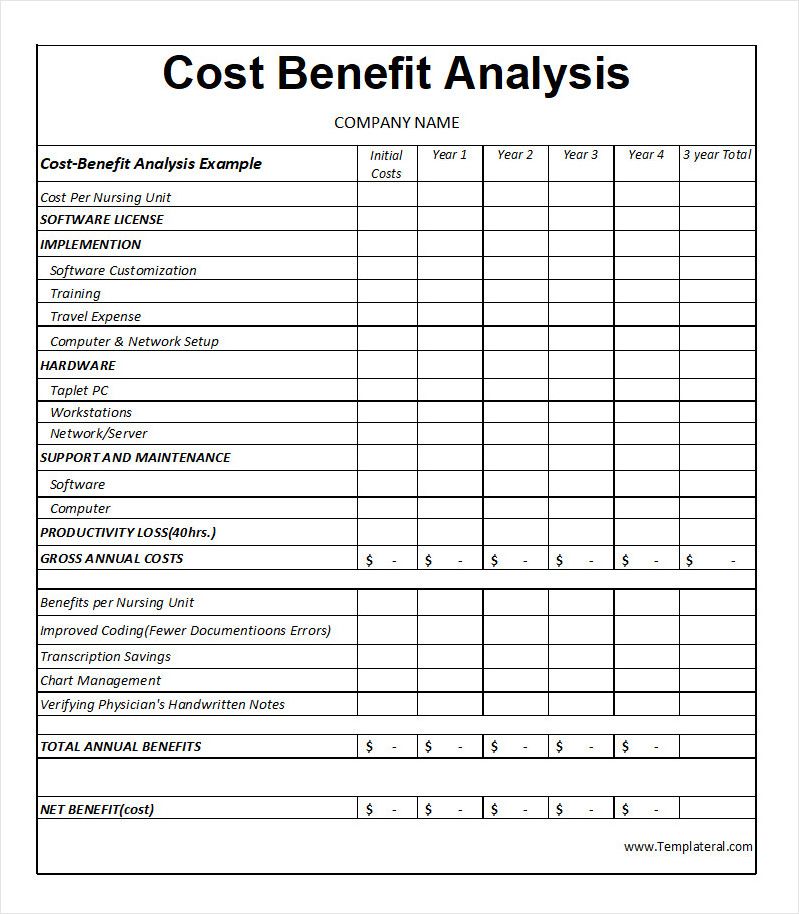What Is a Cost-Benefit Analysis?
A cost-benefit analysis (CBA) is a systematic process used by organizations to evaluate the financial feasibility and profitability of a project or decision. It involves quantifying the total monetary costs and benefits associated with a particular course of action to determine whether the benefits outweigh the costs.
By conducting a CBA, businesses can make informed and data-driven decisions that support their strategic objectives and long-term success.

Why Might a Company Perform a Cost-Benefit Analysis?
There are several reasons why a company might choose to perform a cost-benefit analysis before making a significant decision:
Resource Allocation
Resource allocation is a critical aspect of business management, and conducting a cost-benefit analysis can help organizations allocate their resources efficiently. By identifying projects or initiatives that offer the highest return on investment, companies can optimize their resource allocation and maximize their profitability.
Risk Management
Risk management is an integral part of decision-making, and cost-benefit analysis can help companies assess the potential risks and rewards associated with a particular course of action. By weighing the costs and benefits of a decision, organizations can make informed choices that mitigate risks and maximize returns.
Financial Viability
Ensuring financial viability is essential for the success of any project or initiative. Cost-benefit analysis helps companies evaluate the financial feasibility of a decision and ensure that it aligns with their budget and financial goals. By quantifying the costs and benefits in monetary terms, organizations can make informed decisions that support their financial health.
Strategic Planning
Strategic planning is crucial for long-term success, and cost-benefit analysis plays a key role in this process. By conducting a CBA, companies can make data-driven decisions that align with their strategic objectives and drive sustainable growth. CBA helps organizations prioritize investments, identify growth opportunities, and make informed choices that support their long-term success.
Key Components of a Cost-Benefit Analysis
A cost-benefit analysis typically includes several key components that are essential for evaluating the financial implications of a project or decision:
Identifying Costs and Benefits
One of the first steps in conducting a cost-benefit analysis is to identify all potential costs and benefits associated with the project or decision. This step involves listing both the direct and indirect costs and benefits to ensure a comprehensive evaluation.
Assigning Monetary Values
After identifying the costs and benefits, the next step is to assign monetary values to each item. Quantifying the costs and benefits in monetary terms allows for easier comparison and evaluation, enabling organizations to make informed decisions based on financial data.
Discounting Future Costs and Benefits
Future costs and benefits are adjusted to their present value through a process known as discounting. This adjustment accounts for factors such as inflation and the time value of money, ensuring that all costs and benefits are considered on an equal basis when evaluating the project.
Calculating Net Present Value
The net present value (NPV) is a key metric in cost-benefit analysis that represents the difference between the total benefits and total costs of a project. A positive NPV indicates that the benefits outweigh the costs, making the project financially viable. Calculating the NPV helps organizations assess the potential return on investment and make informed decisions about the project.
Process of Conducting a Cost-Benefit Analysis
The process of conducting a cost-benefit analysis typically involves several key steps that guide decision-makers through the evaluation process:
Define the Project or Decision
One of the first steps in conducting a cost-benefit analysis is to clearly define the project or decision that needs to be evaluated. This step involves outlining the objectives, scope, and potential impact of the project to ensure a comprehensive assessment.
Identify Costs and Benefits
After defining the project, the next step is to identify all potential costs and benefits associated with the initiative. This step involves listing both the direct and indirect costs and benefits to ensure a thorough evaluation of the financial implications.
Assign Monetary Values
Once the costs and benefits have been identified, the next step is to assign monetary values to each item. Quantifying the costs and benefits in monetary terms allows for easier comparison and evaluation, enabling decision-makers to make informed choices based on financial data.
Discount Future Costs and Benefits
Future costs and benefits are adjusted to their present value through the process of discounting. This adjustment accounts for factors such as inflation and the time value of money, ensuring that all costs and benefits are considered on an equal basis when evaluating the project.
Calculate Net Present Value
Calculating the net present value (NPV) is a critical step in cost-benefit analysis. The NPV represents the difference between the total benefits and total costs of a project, helping organizations assess the potential return on investment. A positive NPV indicates that the benefits outweigh the costs, making the project financially viable.
Evaluate Sensitivity and Uncertainty
Assessing the sensitivity and uncertainty of the analysis is an important part of conducting a cost-benefit analysis. Decision-makers should consider the potential impact of changes in key assumptions or variables on the results of the analysis. Identifying uncertainties and risks helps organizations make more informed decisions and mitigate potential challenges.
Make Informed Decisions
Using the results of the cost-benefit analysis, decision-makers can make informed choices that align with the organization’s objectives and financial goals. By considering the implications of the analysis on resource allocation and strategic planning, companies can optimize their decision-making process and drive profitability and long-term success.
Cost-Benefit Analysis Template
A cost-benefit analysis is a valuable tool for comparing the potential costs and benefits of a project or decision. It helps organize data, highlight financial and non-financial factors, and support better decision-making with clarity.
To simplify your evaluation process, use our free cost-benefit analysis template and make informed choices with confidence!
Cost-Benefit Analysis Template – Excel